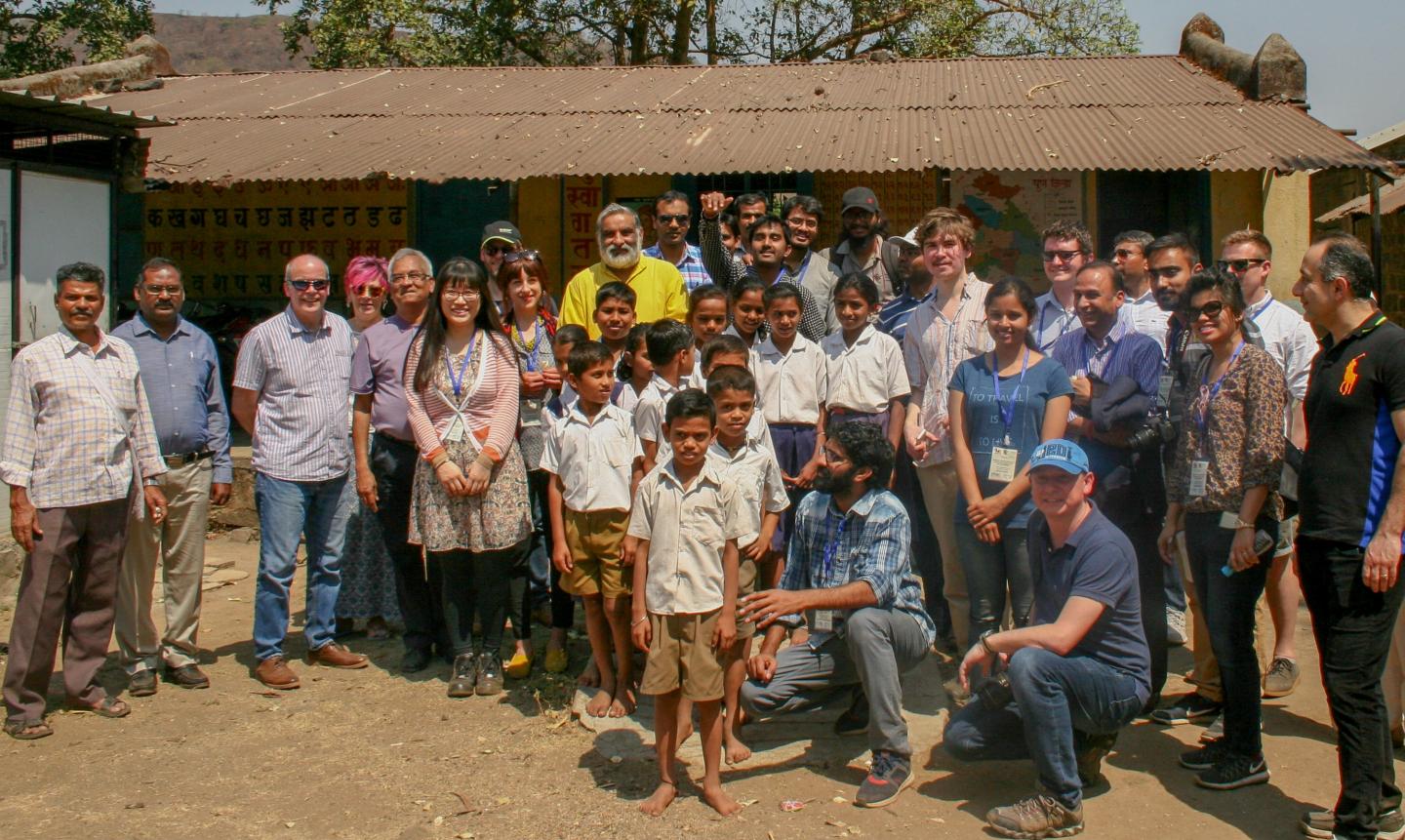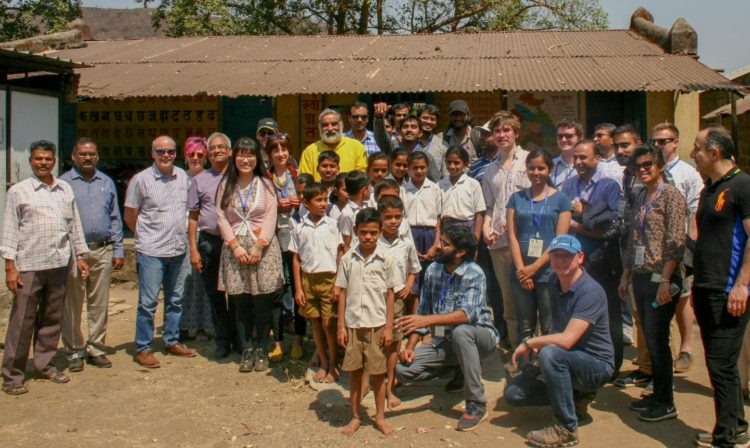£800,000 award for Swansea-led project

Credit: Sunrise Project, Swansea University
A Swansea-led project which will help communities in developing countries to generate their own solar power has been awarded £800,000 by the UK government.
The money will be used to construct prototype buildings and support collaboration between experts from five countries – India, Kazakhstan, Mexico, South Africa, and the UK.
Solar energy is crucial in the shift towards clean, green power. In just one hour enough solar energy falls on the earth to meet the energy needs of the entire world for a year.
Most solar energy technologies to date have been manufactured from silicon, which requires a lot of money and energy to produce.
Now, however, a new type of cell, called a perovskite solar cell, is proving to be an extremely promising way forward.
The perovskite cell is cheap to produce, using widely-available materials. It is flexible and can be printed directly onto a base. Recent laboratory studies have shown that the latest perovskite cells are highly efficient.
The task now is to show that this technology can be manufactured and used effectively on actual buildings in developing countries. This is where the SUNRISE project and this new funding comes in.
The SUNRISE team already includes 12 partner universities in the UK and India. Now, thanks to this funding, they will be able to expand their work by:
- Constructing two “demonstrator” buildings in India – as with the Active Buildings on Swansea University campus, which generate, store and release their own power, the aim is to test the technology and show it works
- Extending the network of experts to include researchers from Kazakhstan, Mexico and South Africa – they will spend a year at Swansea University learning from each other about how best to bring this technology to market
Dr Adrian Walters from the SUNRISE project said:
“Our research is about putting clean, affordable and reliable power into the hands of local communities.
The funding means we can build not just expertise but actual buildings, which will show whether perovskite solar cells can be produced at commercially viable scale and cost.
“If this goal is achieved, it will present a global opportunity to address climate change and pollution issues associated with conventional power generation.”
###
The £800,000 funding for the Swansea-led project comes from the UKRI GCRF Global Research Translation Awards.
Picture captions:
Members of the SUNRISE team from Swansea University and Indian partner universities visiting a village in rural India
Note to editors:
When reporting this story, please use Swansea University hyperlinks. Swansea University is a world-class, research-led, dual campus university offering a first class student experience and has one of the best employability rates of graduates in the UK.
Swansea is ranked 30th in the UK in The Times and Sunday Times Good University Guide. As well as achieving its UK top 30 position, Swansea was named runner-up for the overall University of the Year Title in the Good University Guide, and was also crowned Welsh University of the Year for the second time in three years.
The University has the highest possible rating for teaching – the Gold rating in the Teaching Excellence Framework (TEF) in 2018 and was commended for its high proportions of students achieving consistently outstanding outcomes.
Swansea climbed 14 places to 31st in the Guardian University Guide 2019, making us Wales’ top ranked university, with one of the best success rates of graduates gaining employment in the UK and the same overall satisfaction level as the Number 1 ranked university.
The 2014 Research Excellence Framework (REF) 2014 results saw Swansea make the ‘biggest leap among research-intensive institutions’ in the UK (Times Higher Education, December 2014) and achieved its ambition to be a top 30 research University, soaring up the league table to 26th in the UK.
The University was established in 1920 and was the first campus university in the UK. It currently offers around 350 undergraduate courses and 350 postgraduate courses to circa 20,000 undergraduate and postgraduate students.
The University has ambitious expansion plans as it moves towards its centenary in 2020 and aims to continue to extend its global reach and realise its domestic and international potential.
Swansea University is a registered charity. No.1138342. Visit http://www.
Contact details:
For more information, please contact Kevin Sullivan, Swansea University Press Office. Tel: 01792 513245, or email: [email protected]
Follow us on Twitter: http://www.
Find us on Facebook: http://www.
Media Contact
Kevin Sullivan
[email protected]





